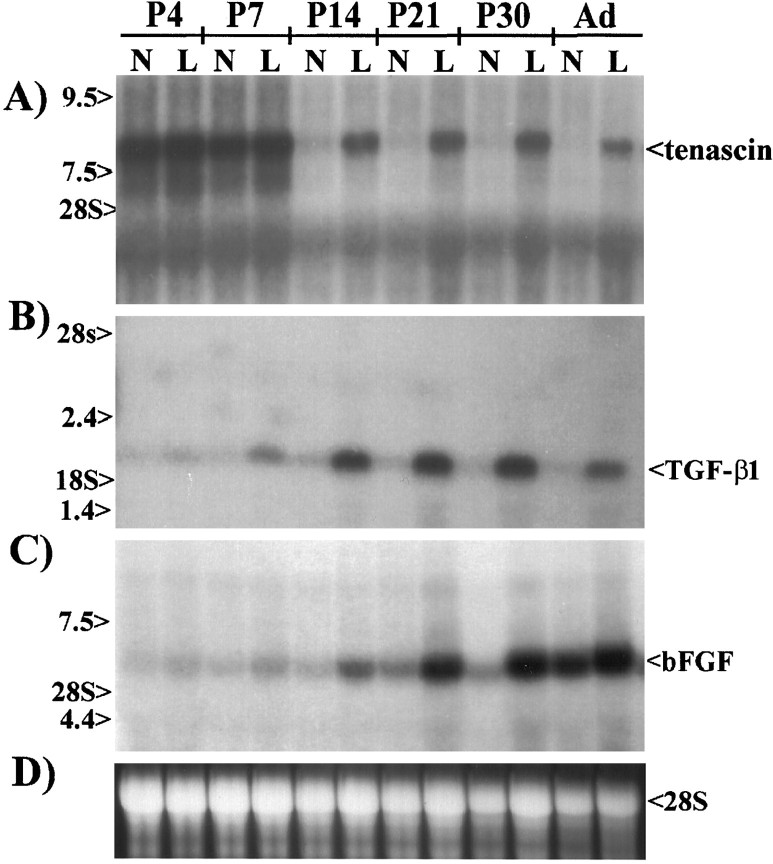Fig. 6.
Increased tenascin expression after injury to the late postnatal and adult brain correlates with a concomitant increase in the expression of TGF-β1 and bFGF. To examine the possibility that tenascin expression after injury in vivo is upregulated by the production of TGF-β1 and bFGF, we examined mRNA from normal (N) and lesioned (L) 4-, 7-, 14-, 21-, and 30-d-old and adult rat brains by Northern blot analysis. A, Northern blots probed for tenascin show high expression in both normal and lesioned neonatal brains; however, in late postnatal (≥P14) and adult rats, detectable amounts of tenascin mRNA were only observed in the lesioned brains.B, Northern analyses for TGF-β1 mRNA show very little expression in the neonates or in normal postnatal and adult brains; however, TGF-β1 mRNA was easily detectable in lesioned postnatal and adult brains. C, Northern blots probed with antisense bFGF cRNA show injury-induced increases similar to those observed for TGF-β1. D, Ethidium bromide staining of 28S ribosomal RNA from the gel of the blot in A shows equal loading of RNA. Gels were loaded with 10 μg/lane of total RNA for tenascin blots and 25 μg/lane of total RNA for TGF-β1 and bFGF blots.

